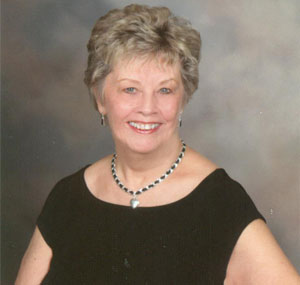M
Leave a Legacy of Giving
You can support our mission of changing lives by saving sight in multiple ways!
 Betty, a 77-year-old retired businesswoman from St. Louis, suffered from a series of genetic eye problems for the last 40 years. She, her mother, her daughter, and her grandson all experienced early onset of cataracts in their mid- to late-thirties. Betty underwent cataract surgery in both eyes at age 37 and wore “coke bottle” glasses and contact lenses for 13 years. In 1986, after numerous eye infections, she received secondary lens implants for which she had not qualified after cataract surgery due to her young age and the unknown long-term effects of the new lens. Finally, after years of complications, she could see well again.
Betty, a 77-year-old retired businesswoman from St. Louis, suffered from a series of genetic eye problems for the last 40 years. She, her mother, her daughter, and her grandson all experienced early onset of cataracts in their mid- to late-thirties. Betty underwent cataract surgery in both eyes at age 37 and wore “coke bottle” glasses and contact lenses for 13 years. In 1986, after numerous eye infections, she received secondary lens implants for which she had not qualified after cataract surgery due to her young age and the unknown long-term effects of the new lens. Finally, after years of complications, she could see well again.
For the next 20 years, Betty experienced good vision with few eye problems. But in 2007, another genetic problem surfaced in her left eye. “I was driving home from church and my vision suddenly seemed very blurry,” Betty recalled. “My daughter took me to the emergency room, and they ruled out any other physical problem but thought the secondary lens implant may have slipped out of place.” Betty made an appointment with Dr. Gregg Berdy, a local ophthalmologist who also serves as a medical director for Saving Sight. Dr. Berdy conducted a series of tests on Betty’s eyes and determined that she suffered from Fuchs’ dystrophy, a genetic disease that can cause corneal swelling and blisters, severe visual impairment, and pain. “My vision was getting steadily worse, which hampered my life. I couldn’t drive at night or in the rain and couldn’t read or be on the computer very long,” Betty said. In 2009, the pain had gotten so bad Dr. Berdy completed two laser surgeries on Betty’s corneas to smooth them out and remove scarring. “There were days I would sit in my house with no lights, wearing dark glasses, and could not go outside,” Betty said. “It was pretty miserable.”
Thankfully, Betty qualified for a corneal transplant in 2011. Dr. Berdy conducted a DSAEK procedure, which involves replacing just the inner, endothelial cells of the cornea instead of the entire thickness of the cornea. This surgical procedure was developed to reduce patient recovery times and improve the regained vision. After the transplant, Betty’s vision slowly improved, and her latest vision test revealed that she has 20/30 vision with corrected lenses and even has 20/40 without lenses. “I’m very, very happy with the results,” Betty said. “It’s amazing – a miracle.”
Today, Betty can read, work on her computer, and drive without restriction. In looking back on her pre-transplant eye problems, she noted, “It affects your life in so many ways. I couldn’t even read the thermostat or the oven controls on the stove. I had a lot of magnifying glasses around the house in different rooms.” Betty is grateful to Dr. Berdy and the donor who generously gave her the cornea she needed to live her life unencumbered by pain and vision loss. “I’m very happy I got the transplant, and I’m very grateful to the donor family,” she said. “It’s absolutely wonderful that people are donating corneas and restoring vision to others. Even for someone my age, it’s a little scary to go through, but it has much improved my quality of life and allowed me to continue to live my active life. It is a rare gift.”
You can join the eye, organ, and tissue donor registry today by visiting the Donate Life America website or your local Department of Motor Vehicles office.